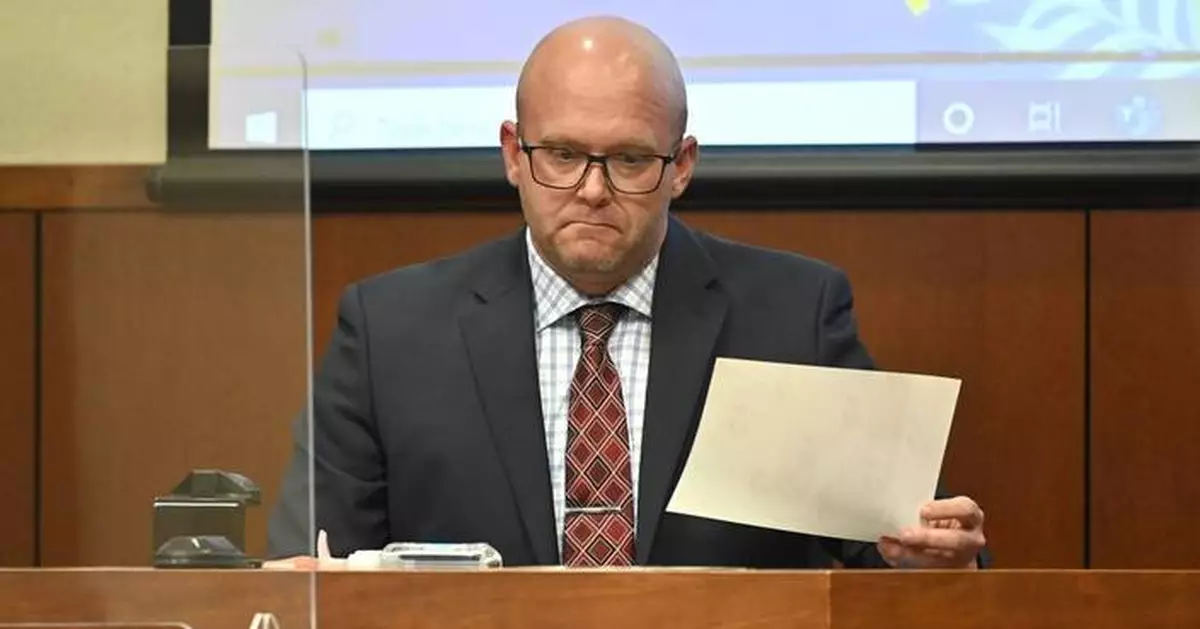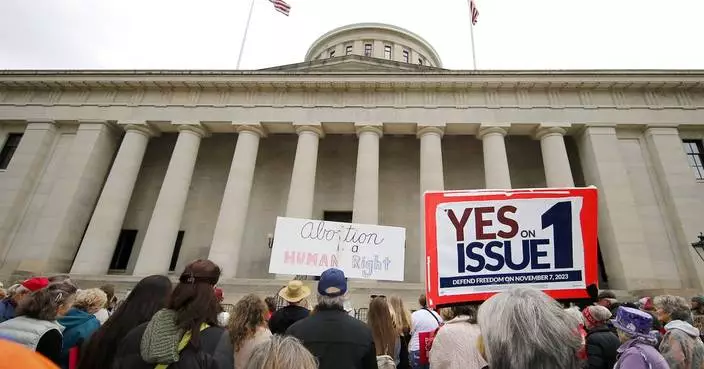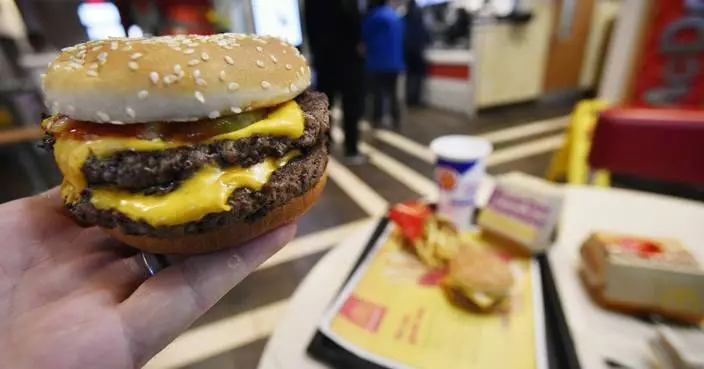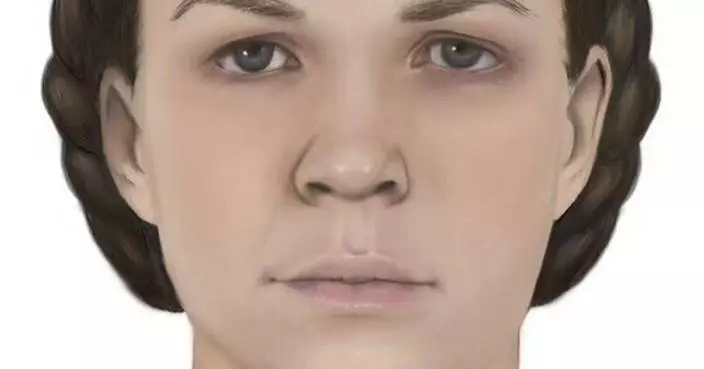LOUISVILLE, Ky. (AP) — The Louisville police officer who used a battering ram to smash through Breonna Taylor's front door testified in federal court Thursday that the gunshots that went off shortly after were the “loudest I've ever heard.”
Police gunfire killed Taylor, a Black 26-year-old medical technician, who had been roused from her bed moments earlier when officers showed up to serve a warrant in 2020. Taylor's boyfriend fired a shot once the door was knocked down by Detective Mike Nobles.
“We were in an echo chamber in there, so the shots were louder than they would usually be,” Nobles testified Thursday on the fourth day of former Louisville officer Brett Hankison’s trial in U.S. District Court. “It was the loudest I’ve ever heard.”
Federal prosecutors say Hankison fired blindly into Taylor’s windows and a sliding door, putting her and her neighbors in danger. Taylor was killed by shots fired from officers at the door. None of Hankison's shots hit anyone.
He is charged with violating the civil rights of Taylor and her next-door neighbors, who had bullets fly into their apartment the night of the raid.
A trial on the same charges against Hankison ended in a mistrial last year, and a state jury in 2022 acquitted Hankison of three wanton endangerment charges.
Nobles was near the front door in the breezeway of Taylor's apartment complex as the shots rang out. Taylor's boyfriend, Kenneth Walker, fired once and struck Sgt. John Mattingly in the leg. Police returned fire, shooting 32 rounds, including Hankison's 10 shots that were fired after he left the doorway and rounded the corner of the apartment unit.
Nobles was called to testify by Hankison's attorneys after prosecutors from the U.S. Justice Department finished their case Wednesday. Prosecutors called fewer witnesses at this retrial, and did not call Walker to testify. They have also put an emphasis on shots fired by Hankison that flew near the front door, arguing that it put a fellow officer in danger.
On cross examination by prosecutors Thursday, Nobles acknowledged that he wouldn't have fired into Taylor's windows like Hankison. Several witnesses called by prosecutors earlier in the week, including new Louisville police Chief Paul Humphrey, testified that officers are trained to identify a target before firing.
Prosecutors also showed testimony Nobles gave to a federal grand jury where he said he wouldn't have fired blindly into Taylor's windows “because this is not Iraq.”
The Taylor shooting made “police look bad” and detoured his career in policing, Nobles testified.
“The dream of living out a life and getting promoted to lieutenant is gone,” he said. “I’m leaving the minute my 20-year (retirement eligibility) hits.”
Hankison is expected to testify Monday. In previous testimony, he has argued that he was making a snap decision after he believed his fellow officers were being fired on by someone inside with a rifle.

FILE - This photo provided by the Louisville Metro police department shows officer Brett Hankison. (Louisville Police Department via AP, File)
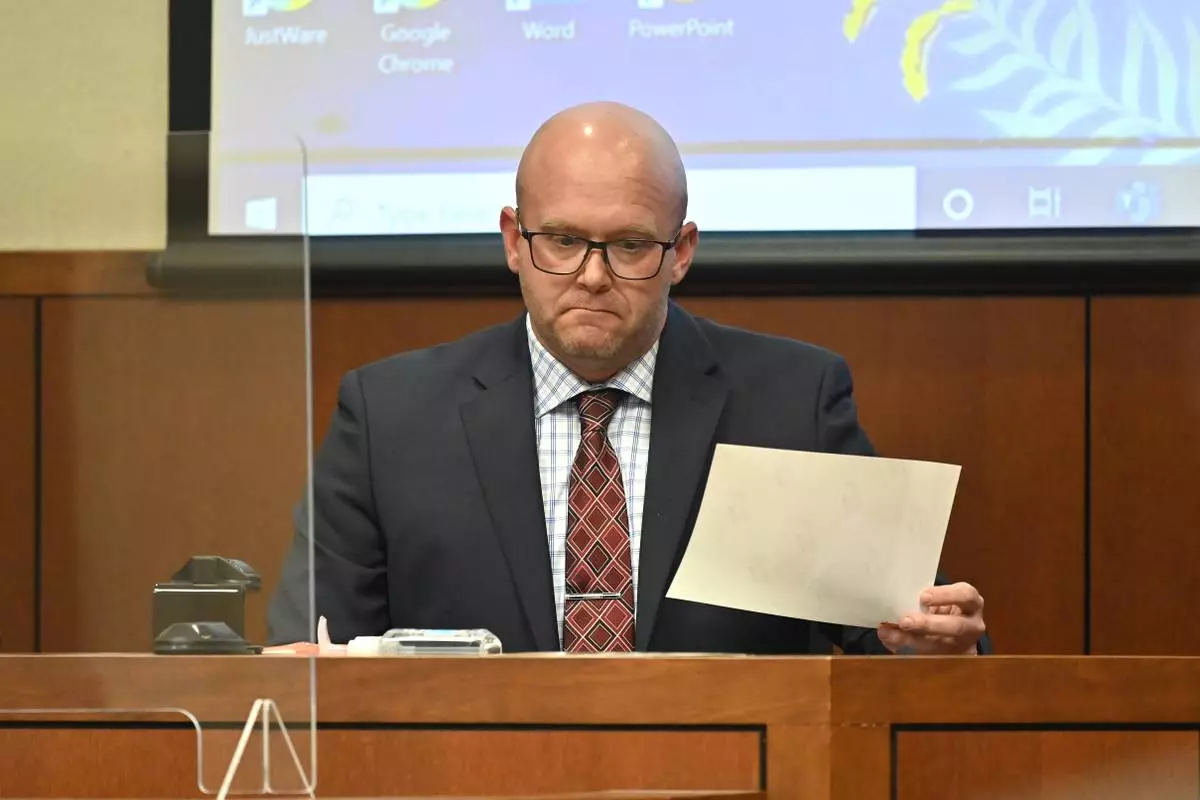
FILE - Louisville Police Det. Mike Nobles examines a photograph while being questioned by the prosecution, Feb. 23, 2022, in Louisville, Ky. (AP Photo/Timothy D. Easley, Pool, File)
RENO, Nev. (AP) — For the first time under President Joe Biden, a federal permit for a new lithium-boron mine has been approved for a Nevada project essential to his clean energy agenda, despite conservationists' vows to sue over the plan they insist will drive an endangered wildflower to extinction.
Ioneer Ltd.'s mine will help expedite production of a key mineral in the manufacture of batteries for electric vehicles at the center of Biden's push to cut greenhouse gas emissions, administration officials said Thursday in Reno.
Acting Deputy Interior Secretary Laura Daniel-Davis said bolstering domestic lithium supplies is "essential to advancing the clean energy transition and powering the economy of the future.”
“This project demonstrates how partnership and collaboration can effectively balance mineral production with the protection of vulnerable species and irreplaceable natural resources,” added Steve Feldgus, principal deputy assistant U.S. interior secretary for land and minerals management.
In the works for nearly eight years, construction of the Rhyolite Ridge mine should start next year in the high desert halfway between Reno and Las Vegas, the Australia-based Ioneer said.
Production is scheduled to begin in 2028 at the mine, which should produce enough lithium for 370,000 vehicles annually for more than two decades, officials said.
It’s unique because it includes a chemical processing facility that will process the lithium on-site instead of having to ship it to China, then back to the U.S. Worldwide demand for lithium is projected to have grown six times by 2030 compared to 2020. The biggest producer of lithium in the world is China, which processes most lithium currently.
“I can say with absolute confidence there are few deposits in the world as impactful as Rhyolite Ridge,” Ioneer Executive Chairman James Calaway said.
The Interior Department's Bureau of Land Management issued the permit after the Fish and Wildlife Service concluded — in consultation with the bureau required under the Endangered Species Act — that the mine would not jeopardize the survival of Tiehm's buckwheat.
The service added the 6-inch-tall (15-centimeter-tall) wildflower with yellow and cream-colored blooms to the list of U.S. endangered species on Dec. 14, 2022, citing mining as the biggest threat to its survival.
The bureau initiated the mine's permitting process five days later. The agencies say Ioneer's subsequent changes to the mine's footprint alleviated concerns about potential harm to the flower.
Environmentalists said Thursday that the mine's final approval was a politically motivated violation of multiple U.S. laws. The Center for Biological Diversity said in a statement that “litigation is now the only way to stop the Rhyolite Ridge Mine.”
“We need lithium for the energy transition, but it can’t come with a price tag of extinction,” said Patrick Donnelly, the center's Great Basin director. He said Biden's administration “ is abandoning its duty to protect endangered species like Tiehm’s buckwheat and it’s making a mockery of the Endangered Species Act."
Fewer than 30,000 of the plants remain in Nevada at the only place they're known to exist in the world across eight sub-populations that combined cover 10 acres (4 hectares) — an area equal to the size of about eight football fields.
USFWS said the project — including the infrastructure and waste rock dump — will come within 15 feet (5 meters) of the buckwheat and result in the loss of some of its designated critical habitat that is home to neighboring bees and other pollinators integral to its reproduction.
But the service said the operation will cause no direct disturbance to individual plants and that reclamation, mitigation and monitoring promised in the blueprint should provide necessary protections for it to coexist with the open pit mine deeper than the length of a football field.
“I don’t think the mine at all will lead to the extinction of Tiehm’s buckwheat," Ioneer CEO Bernard Rowe said Thursday. "If anything, I think we now are going to be part of the solution because we are going to continue providing significant resources ... to ensure it doesn’t become extinct.”
Construction of the mine is expected to employ about 500 workers, with about 350 full-time employees when the mine is fully operational — a boon for tiny Esmeralda County with a population of about 1,000.
Esmeralda County Commissioner Ralph Keys said the rural county that's now the least populous in Nevada was its most populated during the gold and silver boom in the late 1800s.
“This is going to put us back on the map,” he said Thursday.
Opponents of the project say it’s the latest example of Biden’s administration running roughshod over U.S. protections for native wildlife, rare species and sacred tribal lands in the name of slowing climate change by reducing reliance on fossil fuels and bolstering national security by easing reliance on foreign sources of critical minerals.
Daniel-Davis denied environmentalists’ claims that the administration is rushing to develop so-called “green energy” projects at the expense of increased risk to troubled species.
“The urgency of climate change and the need to move to a clean energy economy has been critical to everything we have worked on since day one in the Biden-Harris administration,” she said. “Does that make us look at projects like this or others that would support transition to a clean energy economy differently? I have to say categorically, no.”
Nevada is home to the only existing lithium mine in the U.S. Another is currently under construction near the Oregon line 220 miles (354 kilometers) north of Reno — Lithium Americas' Thacker Pass mine.
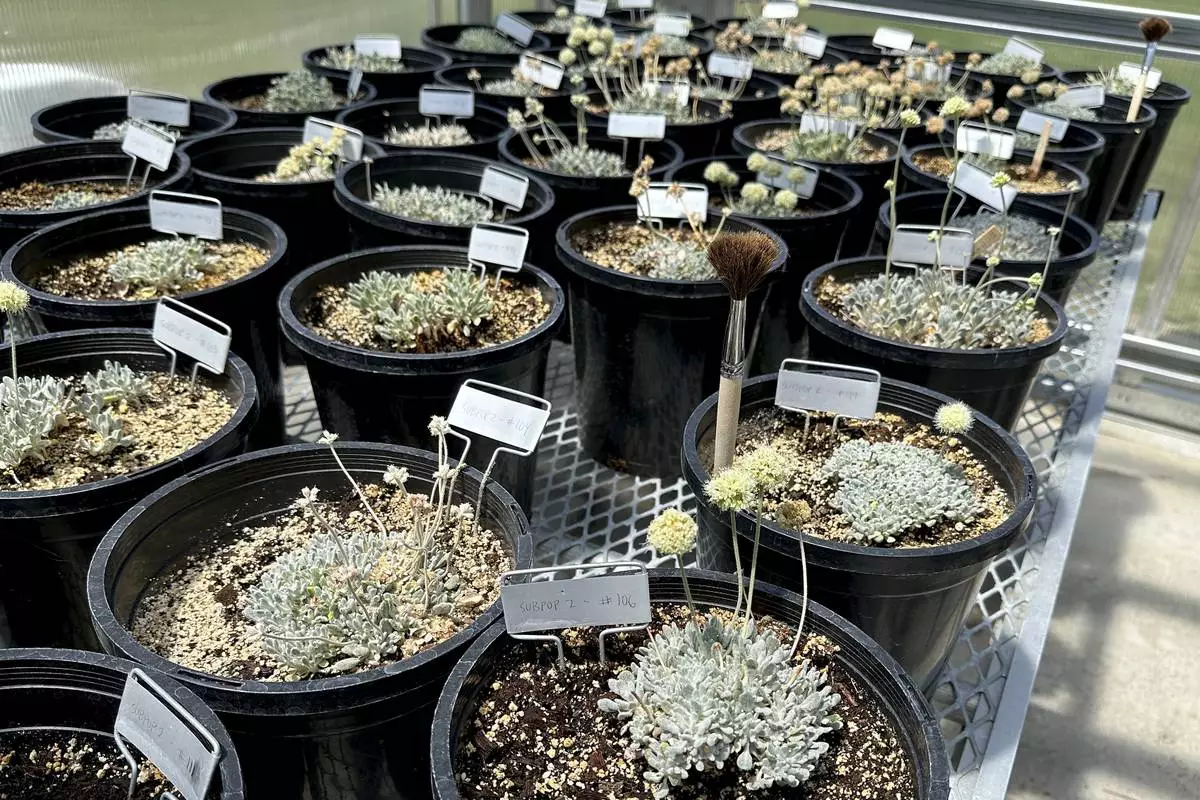
FILE - Tiehm's buckwheat grows in a greenhouse in Gardnerville, Nevada, Tuesday, May 21, 2024. The endangered desert wildflower stands in the way of a mining company's plans to dig for lithium to help speed production of batteries for electric cars and other green energy projects. (AP Photo/Scott Sonner, File)




